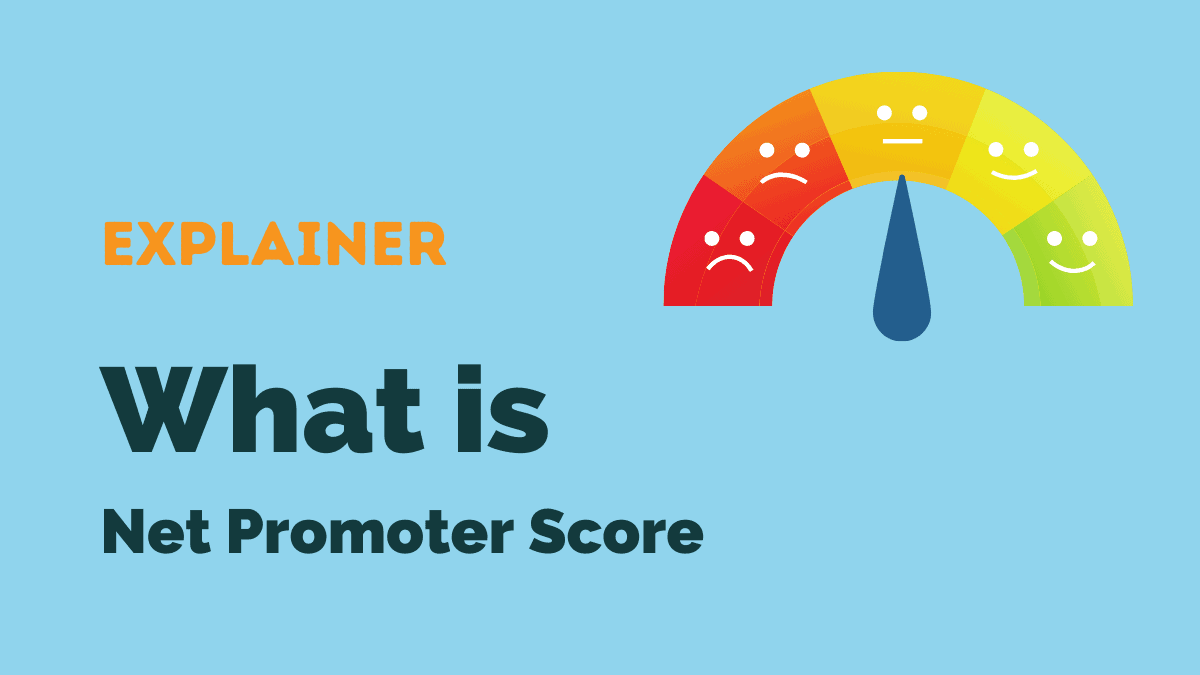Net Promoter Score (NPS) measures the proportion of people who say they would recommend a brand vs. passives and detractors.
It’s a customer satisfaction and loyalty metric that you can calculate by asking your customers a single question: ‘would you recommend our product/service to your friends?’
The results indicate what proportion of your customers are pleased with your service.
(Let’s quickly note that this question assumes a happy customer is likely to make a recommendation. It’s possible that even very happy customers will rate ‘passive’ or ‘detractor’ simply because they can’t imagine recommending, say, an insurance product.)
Let’s discuss how best to measure NPS along with some suggestions to turn sad faces into positive feedback.
How to calculate Net Promoter Score
Customers are asked how likely they are to recommend your friends or family. They score you between 0-10.
0-6 are detractors – They would spew negative feedback and convince potential customers to look elsewhere for the business you provide.
7-8 are passives – These people are on the fence. They don’t ‘love’ the service you’re offering, but they’re likely to stay regardless. Their chances of recommending new clients to your business lay in your willingness to improve on delivery. They’re not detractors… yet still, they’re far from promoting your business with a feedback score of 7 and 8.
9-10 are promoters – Respondents to the survey with a 9 or 10. Some in this section will have already spoken to their family and friends about the wonderful services you provide.
This is the equation for calculating NPS:
To make sense of it all, let’s consider the following example:
After a month of sending out the survey to your customers the results pour in as follows:
% of detractors = 12
% of passives = 50
% of promoters = 38
Using the equation for NPS, your score would be 26. The range is -100 to +100 so anything above 0 is basically good – but it really depends on your own targets and industry benchmarking.
While a positive NPS is not a confirmation for you to take your eyes off the metric altogether, a negative one (or 0) is a sure cause for alarm.
How to improve a negative NPS
Well, it won’t happen overnight, that’s for sure… but you can take steps toward turning detractors and passives toward being brand ambassadors.
Follow up on the negative feedback
Your survey dashboard should display which customers are unhappy with your services.
An automated outbound dialing strategy is always useful for maintaining customer loyalty and satisfaction. Got an unhappy customer on the books? A conversation with the right agent is very likely to improve the situation.
This outbound call center “tutorial” will get you started on the right path.
Align your agents toward better NPS
Contact center agents are often best-placed to positively impact sentiment scores like NPS.
But when they’re tightly aligned to metrics like handling time, their incentives run against the best outcomes for customers.
It’s also worth looking at metrics like your call transfer rate rate and other pain points to see where any bad feeling is coming from.

Feed back into your business
Finally, be sure to collate the drivers for weak NPS scores and share them within your business.
However hard the contact center tries to improve sentiment on its own, the problems are often related to products or in-store experience.




